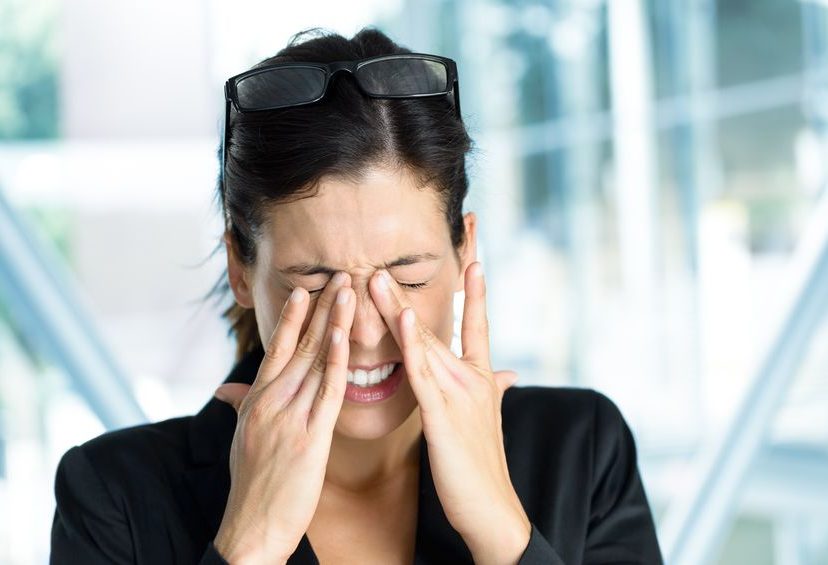Many uncomfortable eye problems often go hand in hand. Swelling, itching and discharge due to allergies, infection, or from getting particles of dust inside the lid, are common examples. Sometimes one issue can lead to the development of other symptoms or conditions. Therefore, it is important to take note of and address any eye problems you may be experiencing before they give rise to further problems. One such case is swollen eyes and eyelids. Swollen eyes are often symptomatic of underlying conditions that can cause dry eye, and possibly lead to chronic dry eye down the road.

The delicate surface of your eyes is normally kept clean and hydrated by the continuous production of tears, which are secreted by the lacrimal gland behind each upper eyelid. These tears are wiped down over your eyes every time you blink and drain out from the bottom through the tear ducts, the small openings in the inner corners of your lower eyelids. Simultaneously, a layer of lipids that keeps tears from evaporating from the eyes is produced from your meibomian glands on the edges of your eyelids. Normally, tear production increases when the eye is irritated. This is a natural response in order to remove the irritant. However, sometimes the processes become interrupted and dry eye occurs. Although not usually very serious medically, dry eye can be uncomfortable and affect how you carry out daily activities as it can make your eyes sting or feel itchy, cause eye tiredness and blurred vision, and if allowed to become too severe can lead to eye damage.
Chronic dry eye can occur when the protective lipid layer is deficient and tears evaporate too quickly. This can be the result of a blockage of the meibomian glands, or a condition that interferes with normal eyelid and gland function. Swelling, therefore, is an important symptom to pay attention to, as regional or eyelid swelling, known as blepharitis, can be an indication that the meibomian glands are blocked or inflamed. Such inflammation can occur when any of the conditions listed above last for an extended length of time or are particularly severe. Other factors which may cause meibomian gland inflammation include infection with bacteria or other pathogens, certain medications and recovery from eye surgery.

A good way to reduce swollen eyelids (blepharitis) and to keep dry eyes in check is to try to clear any clogs and to keep the eyes clean. Proper eye hygiene and mild lubrication can go a long way in removing irritants such as dust, allergens or viral particles, thus helping to keep the lacrimal gland clear and functioning well. Gentle wipes or facial cleansers, especially ones like Cliradex, which is made with natural plant-based products and does not contain harmful chemicals, can be very useful in this regard. They can also help remove buildup of lipids clogging your glands to restore normal tear and oil secretion. If you notice any swelling in your eyes or eyelids, a daily cleansing can help reduce irritation and support the prevention of compounding problems like dry eyes.
Resources:
- Tseng SC. A practical treatment algorithm for managing ocular surface and tear disorders. Cornea. 2011;30 Suppl 1:S8-s14.
- Di Pascuale MA, Espana EM, Kawakita T, Tseng SC. Clinical characteristics of conjunctivochalasis with or without aqueous tear deficiency. The British journal of ophthalmology. 2004;88(3):388-92.
- Goto E, Tseng SC. Kinetic analysis of tear interference images in aqueous tear deficiency dry eye before and after punctal occlusion. Investigative ophthalmology & visual science. 2003;44(5):1897-905.




